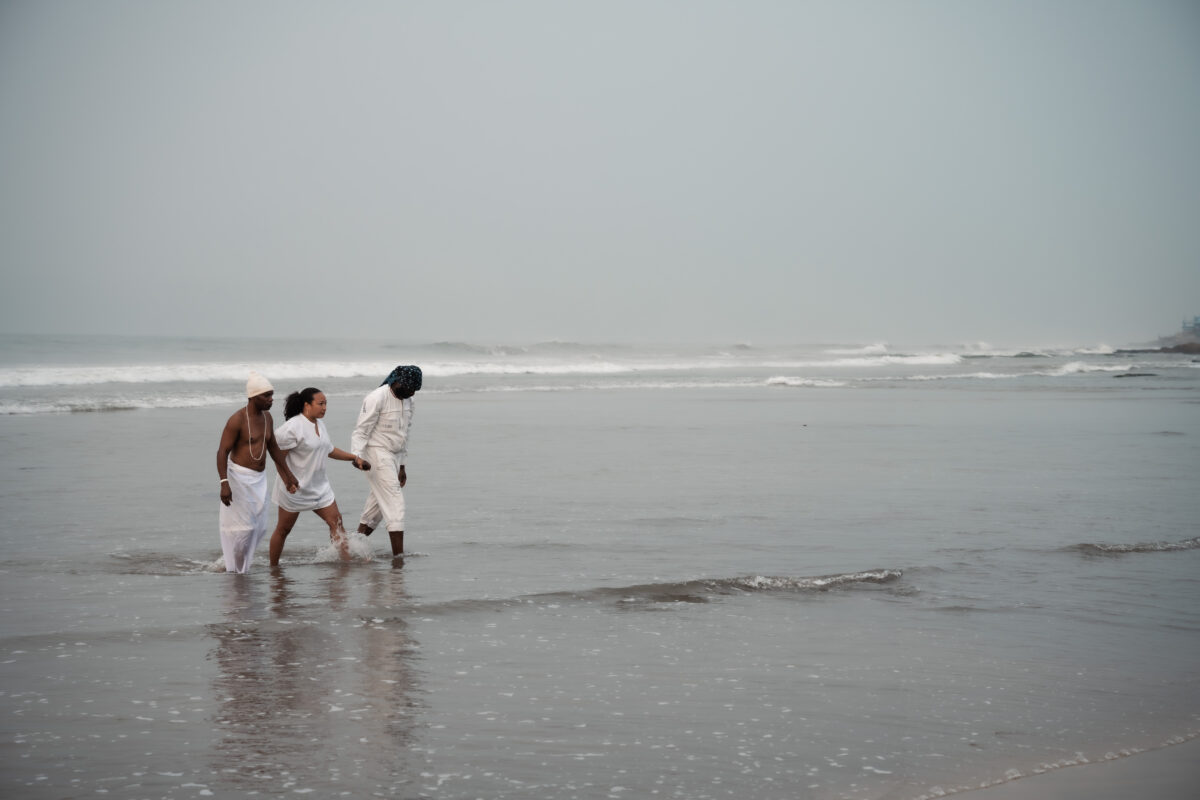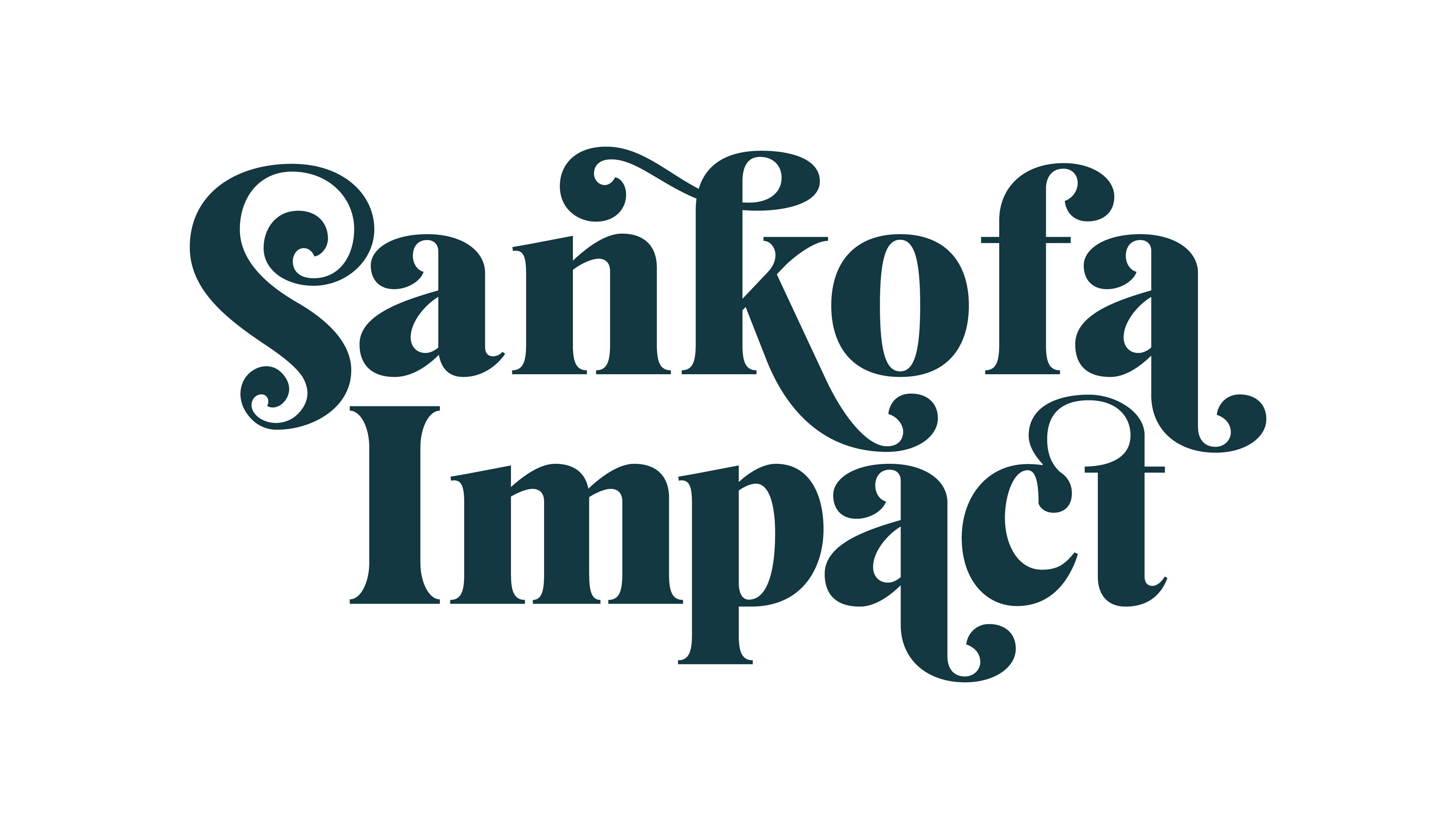Lately, I’ve been sitting with what it means for the body to carry multiple truths at once—how we can be rooted in one place, born in another, and yet pulled with unmistakable force to lands we have never known. My own body feels this complexity. I feel the weight of migration, adaptation, and survival. A longing for something I can’t quite name but can always feel—an ache that draws me toward understanding.
What does it mean that I wasn’t born in the places my ancestors once called home, and yet when I step foot on Southern soil or stand on the red earth of West Africa, something in me settles? I feel at peace in the land of my mother. And what does it mean that I have not yet been to Japan, the land of my father? A part of me is still waiting to be witnessed.
When the invitation came to attend a retreat in Ghana with the BIPOC ED Coalition and The Art Concept, I didn’t hesitate. I felt a call—urgent, clear. Logistics were rough: recovering from sinus surgery, racing to renew my passport, securing a visa, awaiting medical clearance—yet I never questioned going. My body had already said yes. This was a moment that felt larger than myself, and I knew I needed to move toward it.
At Sankofa Impact, the work we do is all about movement. Not just across physical space, but through memory, history, and identity. We create space for people to stand in places of both trauma and resilience, to bear witness with their bodies, and to retrieve what was lost. I knew this journey to Ghana would change me—but I didn’t know how deeply.
From the moment we landed in Accra, heat clinging to my skin and the pulse of the city vibrating through me, I felt a true sense of belonging. The colors, the sounds, the smell of exhaust and food and life happening—sensory overload in a most beautiful way. I was home, and not home. Connected, and still a visitor. That tension lived in my body from the start.
Each day unfolded like a dream—layered, spiritual, and alive with meaning. The taste of jollof rice and red-red. The rhythm of music pulsing from speakers. The elegance and creativity in how people dressed. There was so much beauty, so much generosity. We were held with such care.
But what will stay with me most is the ritual of return.
At Osu Castle—once called Fort Christiansborg, a seat of colonial power perched above the Atlantic in Accra—I stood before a narrow passage carved into stone, heavy with silence. It was here that countless ancestors were forced through, torn from their homeland, their names and stories swallowed by the sea.
Standing in this place, I felt the breath leave my body. My chest, heavy. My legs, unsteady. My bones, remembering. I thought of all those who were taken, whose lives were interrupted. And there I was, rooted in the very soil they once stood on. A cycle that had come full circle. I had returned not just for myself, but for them.
That experience—of embodiment, of memory in the flesh—affirmed everything I teach at Sankofa Impact: that memory isn’t just something we think. It’s something we carry. Something we feel in our bodies, especially when we allow ourselves to stand still, in truth.
The most transformative moment for me, though, came by the water.
I’ve always feared the open water. I didn’t grow up swimming in oceans or lakes, and the idea of drowning has always been enough to keep me far from it. But on this trip, something shifted.
On the beach, just after sunrise, I stood with our guide, Omon, and a Ghanaian priest. Hand in hand, we walked into the Atlantic. I wanted to run. I almost did. But I kept going. And as the waves crashed against my legs, splashing my dress and soaking my skin, I felt my ancestors. Their footsteps once pressed into this same sand. Their faces lifted to this same sun. This ocean—this mighty, mourning, magnificent ocean—carried their memory in its tides.
It wasn’t just symbolic. It was physical. Spiritual. Real.

That morning, I became part of something ancient. I asked for guidance. I felt held. The fear dissolved, not all at once, but enough to keep going.
This journey was a rite of passage. I set out to grow. To learn. To return with something new. According to DNA results, my ancestral roots trace back to this region. But this was more than science or data. This was knowing, in my body.
Upon my return to the Pacific Northwest, my dreams have been vibrant. The other night, I dreamt that my world was spinning—my neighborhood, the trees, the people, the landscape—all rotating slowly around me. At first, I stood still at the center. Then I began spinning too. It felt like flying, like I was floating above everything, arms and legs outstretched. The more I spun, the clearer things became. And just as suddenly as it began, the spinning slowed. I returned to stillness. Back to center.
That is what this trip was. A spiraling toward clarity. A convergence. A return. A pilgrimage.
There’s more I could say—the gifts, the laughter, the marketplace, the contradictions of beauty and struggle in Accra. The incredible human beings I traveled with and met along the way. The pollution, spiritual encounters, echoes of colonialism. But for now, I’ll say this:
Sankofa teaches us to go back and get what was lost. Ghana reminded me that sometimes, what is lost is not gone—it is waiting. In the land. In the water. In the body. And when we return, we don’t just recover history—we recover ourselves.

Thank you for sharing this deeply personal and powerful experience, Felicia. Thinking of you and everyone at SI.